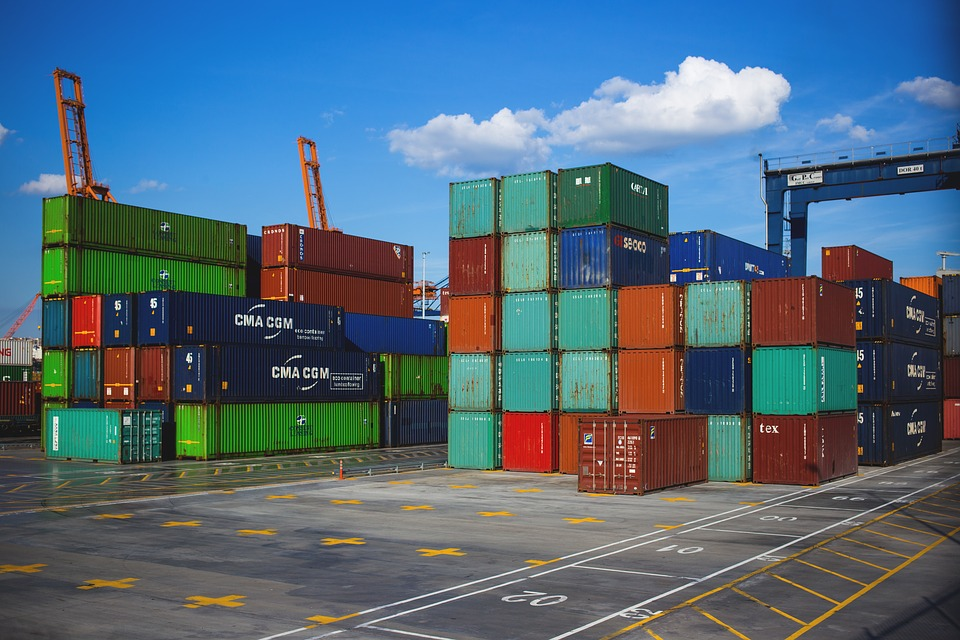Advances in warehouse and supply chain technology will be game-changers for industries, creating new opportunities and reshaping how companies operate.
Warehouse and supply chains experts have predicted the future of the warehouse industry over the next few years, with exciting upheavals on the horizon. Here are some key trends they identified:
Warehouse Trends
Creating resilience and space via scalable automation
With the growing online demand, there will be a need for more warehouses to support e-commerce. In addition, the increase in IoT and other technologies has made warehousing operations more efficient, allowing manufacturers to store stocks without engaging additional manpower.
Automating with robotic equipment such as smart cranes and driverless trucks, automated guided vehicles (AGVs), AS/RSS, and conveyor systems – all connected via sensor technology – warehouses can reduce the number of employees needed to run them while keeping stock levels high.
This means that companies can ignore space constraints for storage or spare land at a warehouse site; they can scale up their operations easily by adding new robots to reduce operating costs.
Data-Driven Warehouses
Warehouse technology has changed dramatically over the last few years, and it will continue to evolve in time as more smart technologies come into play.
The Internet of Things (IoT) solutions will have a significant impact on warehousing operations by increasing visibility into all aspects of supply chains, from parts delivery to customer service and asset utilization. Unfortunately, most companies are still not leveraging Industrial IoT solutions’ potential to full capacity.
However, as this trend progresses, many will begin connecting their warehouse equipment via sensor technology once they see tangible benefits and ROI.
With better data management capabilities, companies can manage inventory levels effectively while maintaining excellent service standards for consumers. Managing data digitally helps reduce costs significantly per transaction, and retailers can remain competitive by keeping costs down. The companies that invest in implementing the right kind of technology will distinguish themselves from their competitors within a few years.
Micro-Fulfillment Centers
Shipping products to customers quickly and efficiently is a top priority for e-commerce companies. Besides using automation technology, they need to have ship-from locations (SFFLs) in proximity to their H.Q. or that of major suppliers.
Over time, it’s believed that these cloud-connected devices will be able to provide data on how often an item has been used and its maintenance requirements – information manufacturers can use beyond logistics operations.
A company may outsource the manufacturing activities but want to maintain tight control over fulfillment centers, especially for faster deliveries and customized customer support. In the future, the SFFLs will likely move closer to the customer and be fully automated to provide a highly responsive and personalized service.
Flexible Pick Methods for Multiple Order Profiles
To meet increasing consumer demands, e-commerce will require companies to be flexible with their order profiles. This includes offering free shipping to all customers while maintaining high stock levels and keeping prices low.
As SFFLs continue to evolve into micro-fulfillment centers, delivering products through drones or robots could solve this issue. Through the use of autonomous vehicles – which are cheaper than today’s most advanced AGVs – shoppers will experience a little delay in delivery times as well as a shorter delivery route for quicker and more reliable services.
Digital Transformation in Warehouse Trends
As smart technology becomes increasingly available and affordable, consumers will enjoy a better shopping experience through enhanced services. This includes the ability to order online from any location by smartphone or another mobile device.
The Internet of Things (IoT) is already transforming supply chain management and logistics activity. By connecting the entire process end-to-end, businesses can gain additional insights into their stock levels and product maintenance requirements for optimal use.
Connecting warehouse technologies into a single network means that manufacturers can achieve new levels of efficiency and accuracy in their ordering processes while ensuring reliable delivery times at competitive rates.
Supply Chain Trends
Green Supply Chains Can be Profitable
The use of environmentally friendly products and activities has increased in importance over the years. With customers focusing on sustainable consumption, manufacturers should incorporate green business practices into their supply chains to draw brand loyalty and support.
The Future of Circular Supply Chains
At the moment, most manufacturers are not taking advantage of closed-loop distribution. As a result, only 5% of plastics used in packaging reach the recycling plant, while another 30% end up in landfills. By adopting a circular approach to managing inventory and waste, companies can reduce costs and generate higher profits with little or no negative impact on customer service levels.
Additional Supply Chain Integrations
Using smart devices in the supply chain also opens new doors for companies to use their data to improve business operations. This includes smartphone access that allows users to scan barcodes and receive product information such as price lists, order tracking details, delivery schedule updates, and other important customer service features.
SCaaS and SCM
Are you still using a traditional ERP system to manage your supply chain? If you are, the chances are that you’re missing out on the full benefits of advanced cloud technology. Oracle’s SCaaS and SCM can be used to provide information anywhere in real-time through smartphones or other digital devices. The idea is that managing today’s complex supply chains requires sophisticated software tools that can proactively deliver the right information at the right time.
Increase in Elastic Logistics
As the supply chain becomes more complex, businesses will turn to Big Data analytics. This is to provide more accurate insights into customer needs. For example, these tools can determine inventory levels based on local sales trends and analyze manufacturing costs and delivery requirements for complex orders.
Companies that can leverage these new technologies and benefits may enjoy a competitive advantage. This is due to lower inventory management costs, smoother business processes, and shorter lead times. This could also translate into higher profits through increased interest in their products and services.
Supply Chain Management – The Standard Certification Process
In the beginning, there was no standard certification process. However, as more and more companies invest in SCM, they realized the need to set some standards. That is how the ISA developed its certifications.
An ISA certificate denotes that you have been tested on certain skills related to the supply chain profession. It’s not that you are an expert or “certified.” If anyone tells you otherwise, let me know! The reality is that most industries rely heavily on consultants (and other external parties) for expertise rather than trying to build internal knowledge and skillsets. But by investing in this certification process early in your career puts you at the forefront. This will help in recruited by these clients without sacrificing your ability to pursue what matters.
Handling Information with Blockchain Tools
Block chain is a technology that is a decentralized and distributed digital ledger. While it originally was developed to handle transactions, block chain has applications across industries. This is where it is needed for transparency, auditability, security, and, most importantly, trust. For example, supply chain management is one area of logistics that can benefit from this technology. With block chain in use, buyers will be able to verify exactly where their products are coming from as well as how they were made throughout the process. In addition, transparency breeds trust, and trust leads to repeat business.
The Use of IoT, Robotic Automation, and A.I., AR, and V.R.
The IoT and other advancements in robotics and A.I. mean that there is a greater shift toward efficiencies. For instance, with advanced technology rather than additional manpower. An example of this is having automated guided vehicles (AGV) with 360-degree cameras. This ensures smooth movement from one point to another within warehouses wherever necessary. No one person needs to push a button to move these automated vehicles. These vehicles rely on sensors and advanced technologies.
The advancement of artificial intelligence (A.I.) means that we have smarter systems. These systems don’t just react but can anticipate what’s needed next in many aspects of our lives. For instance, the supply chain. A.R. and V.R. are two technologies that will also bring supply chain management to the next level. This would be in terms of efficiency. For example, when a stock-out situation occurs at a distribution center or retail location. Then A.R. can be used for employees to see exactly what is needed and where it needs to be placed on shelves. That same system could also have an alert sent out as soon as something’s gone missing from storage. This will help in replacing and restocking before the customer even notices.
Conclusion
All in all, the future holds a lot of promise for supply chain management. This is so much that those who are not prepared will likely find themselves left behind. While this list is far from comprehensive. It provides an idea of some of the trends that organizations should be considering. This is necessary as they plan their H.R. strategy over the next five years.









